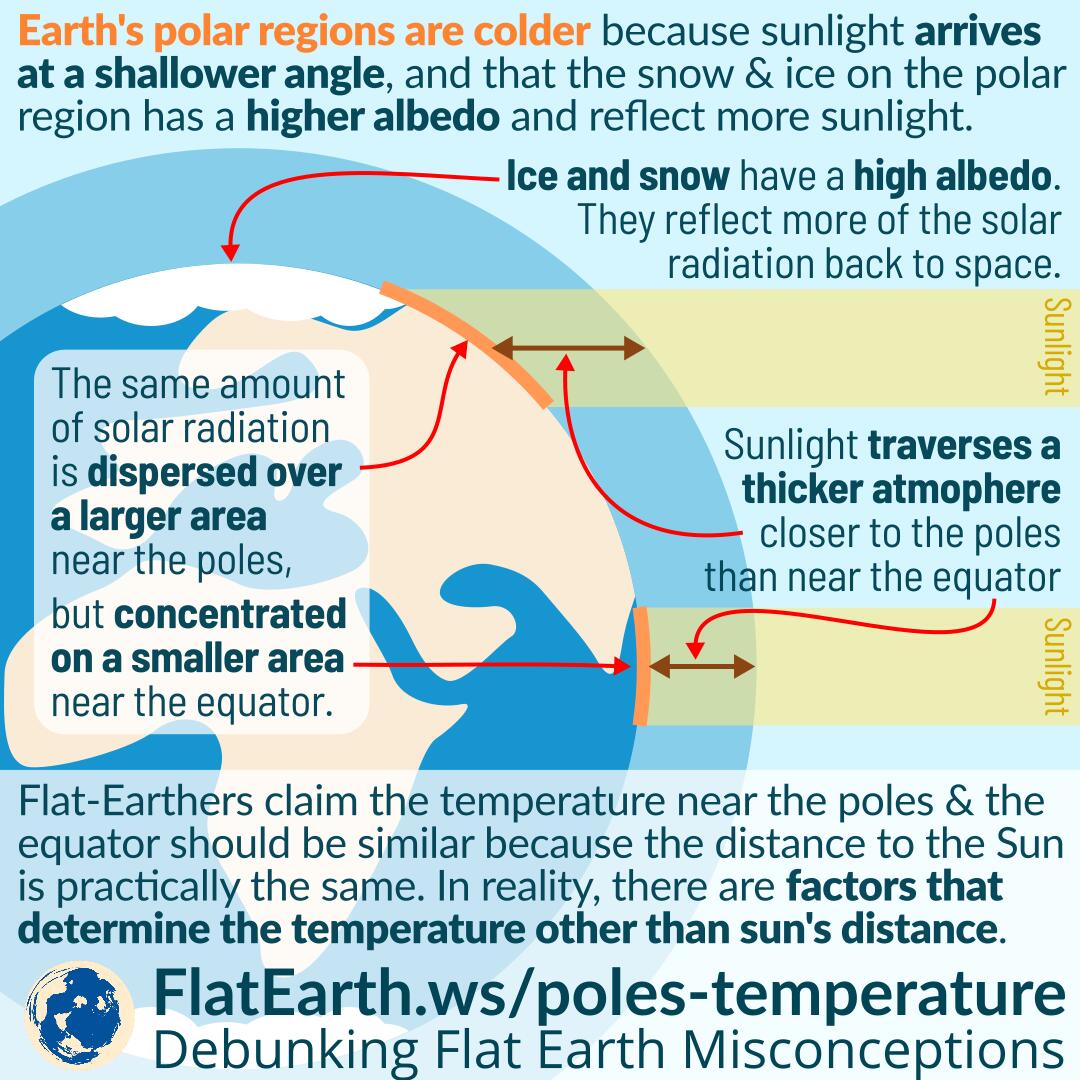Polar areas have a lower temperature than areas closer to the equator because the same amount of solar radiation is dispersed over a larger area, and the surface of ice and snow reflects more sunlight than darker surfaces.
In the spherical Earth model, the distance to the Sun from the poles and the equator is practically the same because the sun is much farther than the distance between any two locations on Earth. Because of that reason, flat-Earthers then claim that the temperature in polar and equatorial areas should be the same. In reality, the distance to the sun is not the only factor that can determine temperature.
Some of the reasons that determine the difference in temperature between the polar and equatorial areas of the Earth:
- The angle of the sun. Near the equator, the same amount of solar radiation is concentrated on a smaller area. While near the poles, it is spread over a larger area.
- Tropospheric length. The solar radiation needs to traverse a thicker atmosphere near the poles than the equator. Traversing a thicker atmosphere means more energy gets absorbed by the atmosphere, and less of it reaches the surface.
- Albedo. Ice and snow have a lighter color. They reflect more solar radiation compared to the darker surface of the soil, vegetation, and the ocean closer to the equator.
- Water vapor. Water vapor is a greenhouse gas that traps the energy from the sun in Earth’s atmosphere. In a colder climate, there is less evaporation and less water vapor in the air. As a result, less solar energy is absorbed in the troposphere, and more of it escapes to space.
References
- The top 5 reasons why polar areas are cold – TheWeatherPrediction.com


